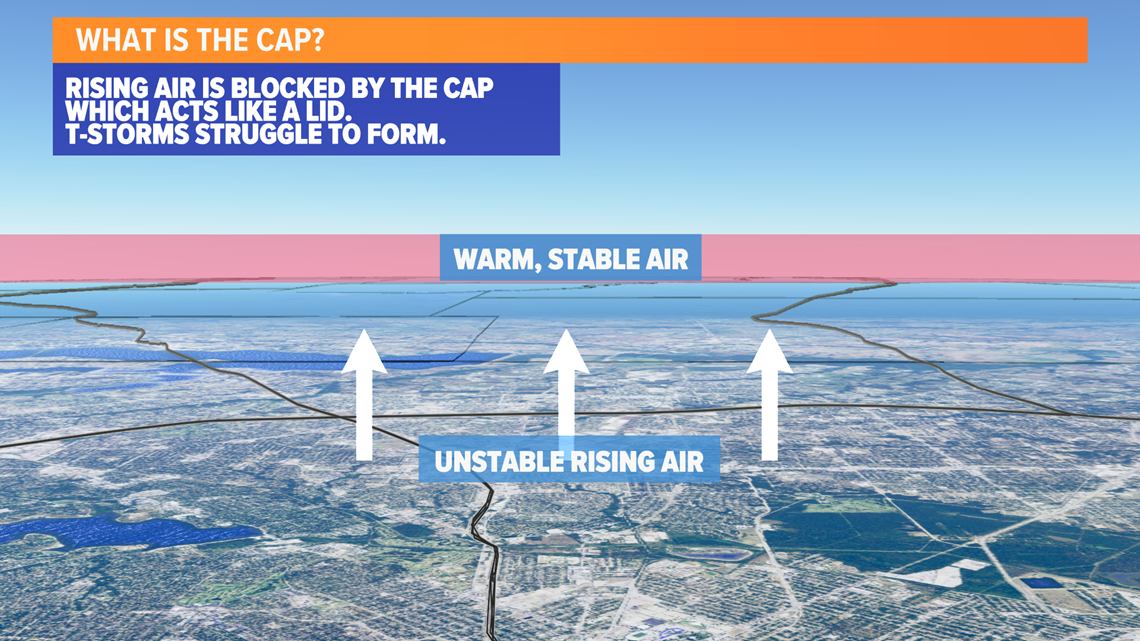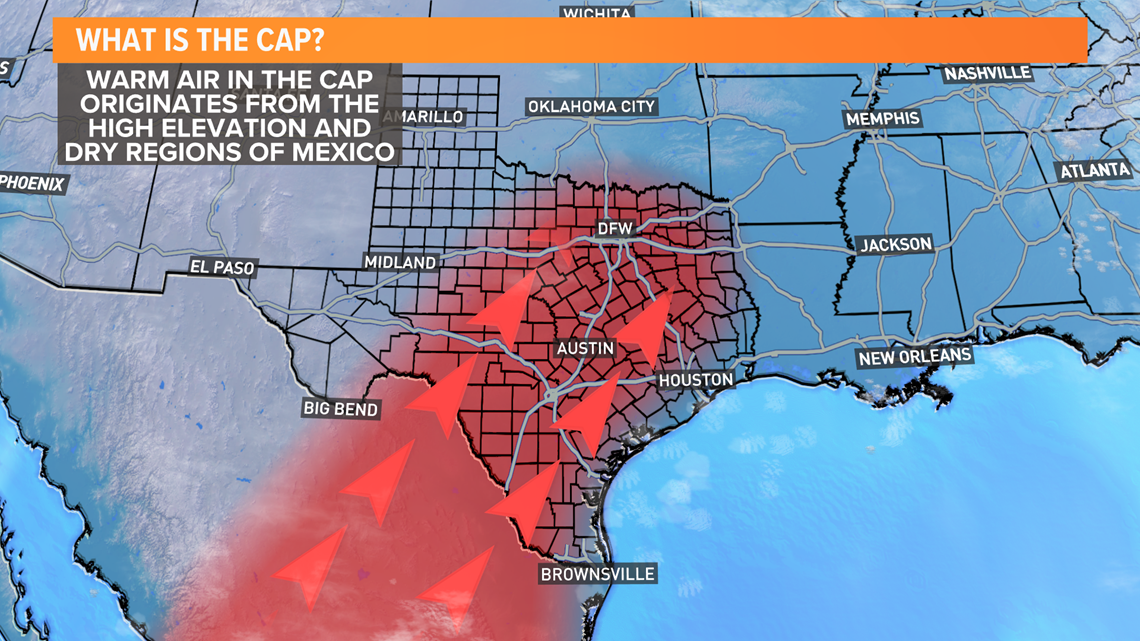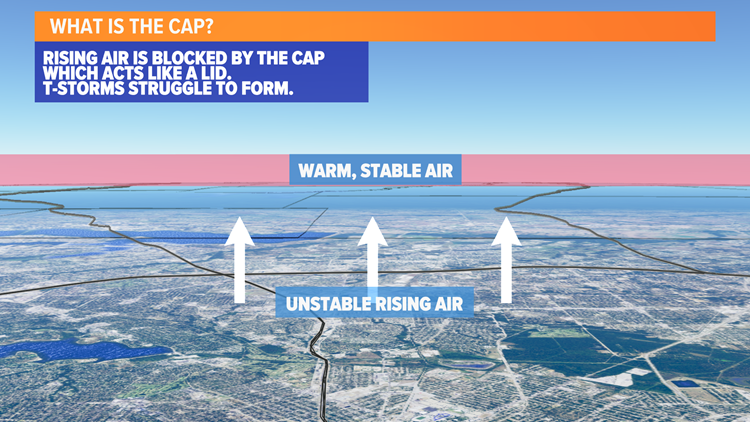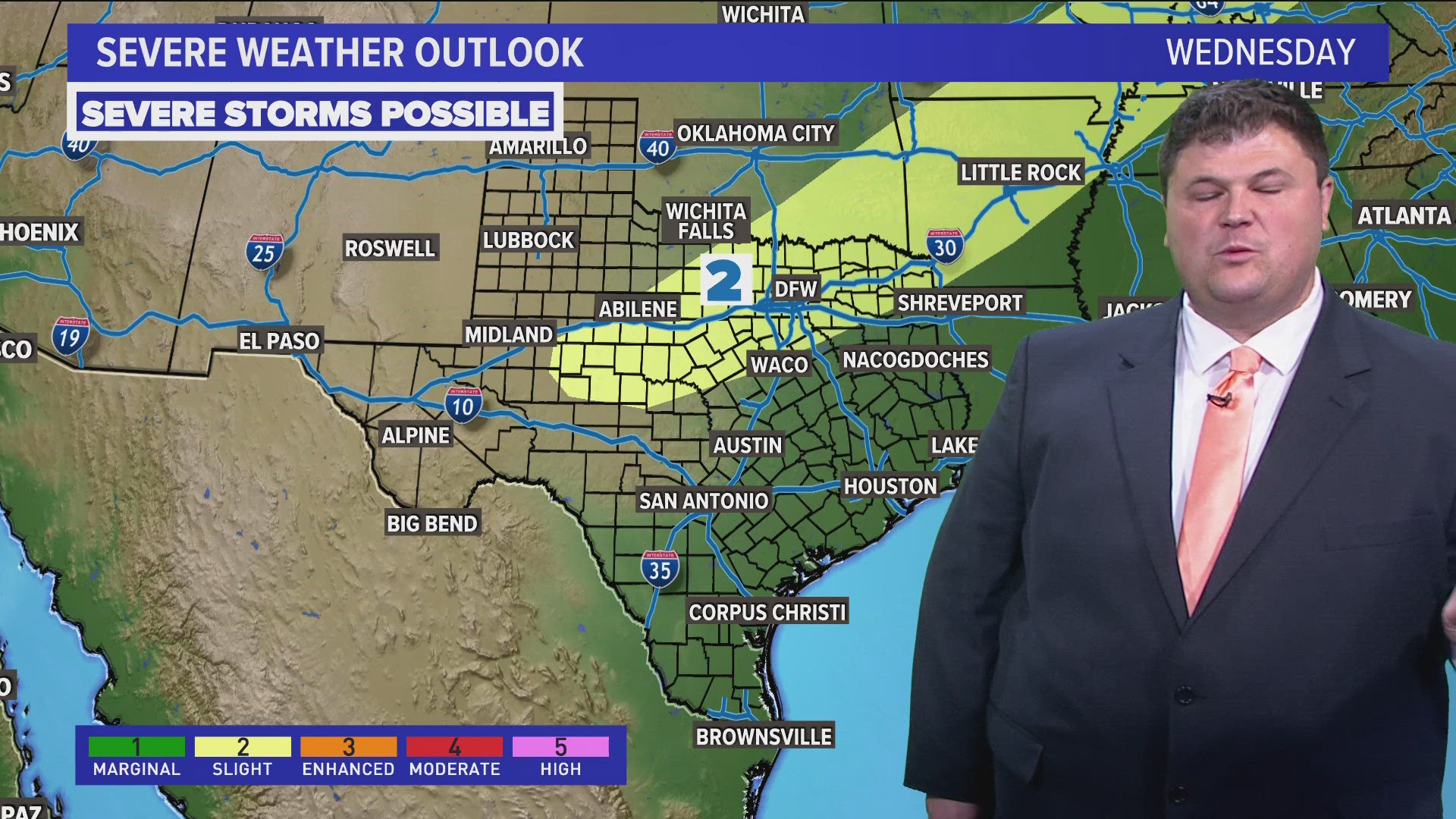DALLAS — Have you ever heard WFAA meteorologists talk about "the cap?"
Maybe you've lived in North Texas for some time, but never understood what they are talking about. Or you are new to North Texas, and completely confused by this term.
Either way, let's talk about "the cap" and what it means for North Texas weather.
What is it?
The cap is a warm layer of air in the atmosphere above our heads. Usually, this layer of air is around 2,000 to 5,000 feet up in the atmosphere.
The reason we call it a "cap" is because this layer of warm air acts like a lid preventing storms from being able to form.


Think of it like a pot of boiling water with a lid on top. When the lid is on, hardly any steam can make it out of the pot. But when you remove the lid, all that built up steam rises very quickly out of the pot.
So when a cap is in place, thunderstorms have a hard time forming, because that cap or lid is keeping any air from rising and thunderstorms forming.
Where does it come from?
The cap is a unique feature especially common in Texas and Oklahoma, but can be found in other parts of the country prone to severe weather.
The higher elevations of Mexico southwest of Texas become warm and fairly dry this time of year. When the wind in the layer of the atmosphere above the surface (2,000 to 5,000 feet) is from the southwest, it transports that warm and dry air into parts of Texas and North Texas.
That warm and dry air from Mexico causes the cap above our heads.


What happens when the cap breaks?
Keep in mind that the cap is like a lid on a pot of boiling water.
If the cap is not there, storms can freely form, but it is hard for them to become severe. Days that don't feature a cap are usually days that feature widespread on and off showers and storms, but not much in the way of severe storms. Are severe storms possible? Sure, but they are not as common.
Think of how when that lid is not on the pot, steam just keeps rising over and over, but stays pretty constant in its intensity.
Now think about when you've had the lid on the pot, but quickly remove it. All that steam bursts forth rapidly out of the pot.
That is very similar to what happens when the cap breaks.
Warm, unstable air underneath the cap breaks through the cap and thunderstorms form very rapidly and can quickly become severe. All that energy has been brewing underneath the cap, so when it breaks thunderstorms can become quite strong very quickly.
When this happens, these are usually the most intense storms we can see here in North Texas. Storms with very large hail, damaging winds and tornadoes.
RELATED: Check your local radar
Does the cap always break?
Absolutely not!
And this is a good thing. This prevents North Texas from seeing even more severe storms than we already do.
If the cap is very strong, sometimes it takes temperatures well over 100° at the surface to break the cap. Thankfully, temps like this are not very common during the spring. Even during the summer when temps are that warm, the air is usually too dry for thunderstorms to form.
Some days we will have a chance for thunderstorms to form, but the cap never breaks, so all that happens is a warm and dry afternoon.
The strength of the cap can be hard to predict, and our computer models struggle with the strength of the cap sometimes.
One of the reasons why it is hard to predict is that a 1° to 3° difference in temperature can determine if storms form or not.
You'll hear WFAA meteorologists talk about the cap a good amount during the spring, so hopefully you now have a better understanding of what they are talking about.
And when they say there is a chance for storms, but then no storms form, you can take it easy on them-- because the cap can be hard to predict.
Remember to download the WFAA app to check one of our dozens of local radars near you, get weather alerts, and see the latest forecast, cameras and current conditions.


